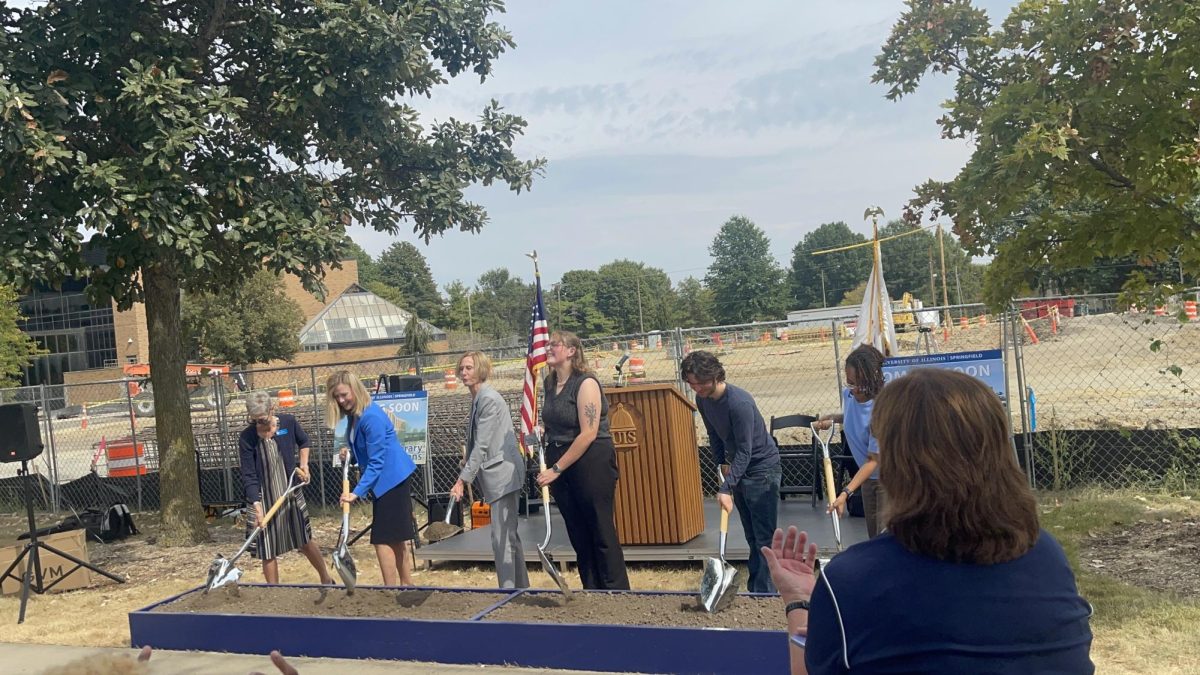The UIS Student Technology, Art, and Research Symposium took place on Friday, April 12, 2024. This was an event held for students to showcase their research on a wide variety of topics. Some of the research that was presented at the symposium revolved around government-funded studies regarding emergency responses between private and public agencies, addiction, water quality in towns across Illinois and sickle cell disease, among other topics.
Senior Conrad Henderson, studying biology, was one of the presenters at the symposium, along with some of his classmates. Their research was focused on sickle-cell disease and possible treatments. Their findings showed that sickle cell disease is more prevalent in impoverished countries. They also found that, rather ironically, the technology used to treat the disease is advanced and expensive, so the people most at risk can’t afford treatment so easily.
Senior Communication major (and Observer contributor) Ellie Shonkwiler decided to do her research on the water quality around Illinois. She took samples of water from Champaign, Clinton, Monticello and Bement, Illinois. She suspected that her research would show the water was best in towns with more money and people, and worse in towns with less money and fewer people. She found that in her hometown of Bement, the water wasn’t the best, but rather in Champaign it was the best.
research on the water quality around Illinois. She took samples of water from Champaign, Clinton, Monticello and Bement, Illinois. She suspected that her research would show the water was best in towns with more money and people, and worse in towns with less money and fewer people. She found that in her hometown of Bement, the water wasn’t the best, but rather in Champaign it was the best.
 Legal Studies major Nick Marquez – another Observer contributor – focused his research on the rising gambling addiction in his hometown of Waukegan, Illinois. His research focused on how the government was essentially funding addiction to generate revenue. Through his research, he was able to find inaccuracies in the way things were handled, and how they are specifically impacting his community.
Legal Studies major Nick Marquez – another Observer contributor – focused his research on the rising gambling addiction in his hometown of Waukegan, Illinois. His research focused on how the government was essentially funding addiction to generate revenue. Through his research, he was able to find inaccuracies in the way things were handled, and how they are specifically impacting his community.
There were many great research demonstrations at the STARS Symposium, as well as musical performances and artistic presentations. The variety of research topics made for informative and interesting presentations, showcasing the students’ hard work. It was interesting to see what subjects they chose to dig deeper into, and it will be interesting to see what next year’s STARS Symposium has to offer.







